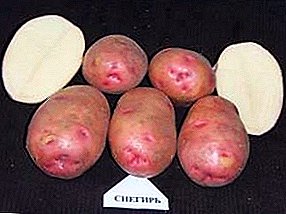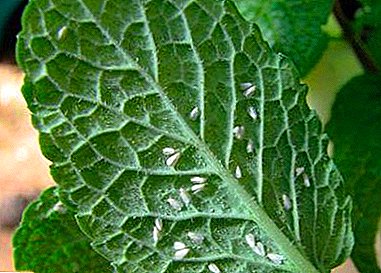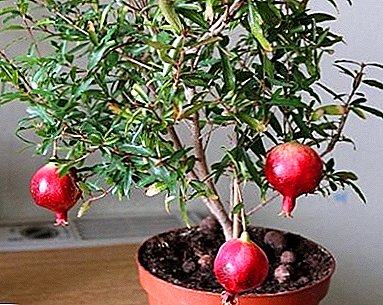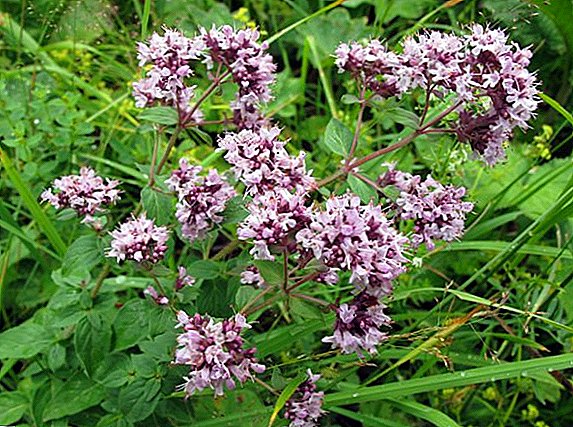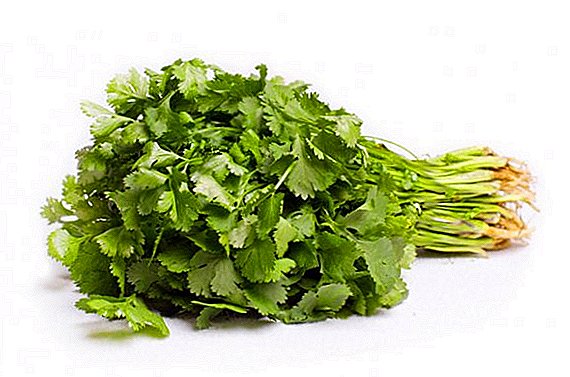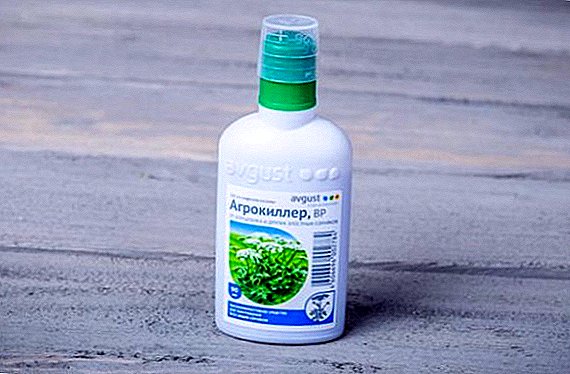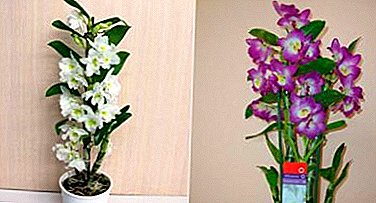
An orchid has a huge number of subspecies. However, not everyone is able to survive at home. The most common form that will take root easily in your home is Dendrobium Nobile.
By the way, the well-known Phalaenopsis belongs here. In this article we will talk about Nobile flowering, how to make the plant dissolve the buds and what to do after the flowering is completed.
Periodicity
Dendrobium buds once or twice a year. Florist can admire the beauty of flowers for two or three months. But it should be said that this period can be slightly extended. To do this, the plant should be in a cool place away from direct sunlight.
Attention! After each bloom, the orchid should rest for a month though.
Why sometimes does not dissolve?
 These reasons also apply to the Dendrobium Berry Oda.
These reasons also apply to the Dendrobium Berry Oda.
- First, the florist must check the maintenance conditions of his flower. This temperature and humidity, and watering, and lighting.
- If all the care options are correct, but there are still no buds, then it is worth thinking about changing the “place of residence” for Nobile. Maybe you need to change the pot to a larger one.
- The next thing you need to pay attention to is the condition of the ground. If the flower is in this substrate for more than three or four years, it must be urgently changed.
- Another reason for the lack of flowers can be a lack of mineral salts in the soil. Also, prior to the formation of buds, the orchid must be periodically fertilized.
To do this, use and just feeding, and growth stimulant.
It is recommended to use fertilizers no more than twice a month. Otherwise, you risk harming the plant, rather than improving its condition.
- Periodically inspect Dendrobium for pests. They can also prevent the formation of buds.
Is it possible and how to make Nobile dissolve ahead of time?
Experienced growers say that it is quite realistic to do this, but it is highly undesirable. The fact is that the release of flowers from the plant takes a lot of effort. Therefore first the orchid itself must mature, grow strong, gain nutrients, and only then form buds. If Dendrobium Nobile blooms at the age of less than a year and a half, there is a risk that after the buds fall, he will start to hurt, because he gave them all his strength.
But if the florist really wants to admire the Nobile flowers, he needs to perform the following manipulations:
- Change stagnant ground. If the substrate is still relatively fresh (it is not more than three years old), you just need to feed it.
- Remove the bottom leaf plates. This will stimulate flowering. IMPORTANT! Remove parts of the plant can be exclusively sterile instrument.
How long does flowering last?
 Flowers can hold out on a flower stalk for two to three months. Sometimes these numbers may be a little more or less. It all depends on the conditions of detention.
Flowers can hold out on a flower stalk for two to three months. Sometimes these numbers may be a little more or less. It all depends on the conditions of detention.
I would like to pay special attention to the bloom of the White Dendroibum. This species is usually not less than half a meter. Stems grow from one to three. When the plant blooms, the stems are completely covered with white flowers, the number of which reaches up to 60 pieces. How long does Dendrobium White bloom? Also for several months (maximum six months).
Dendrobium Bely is famous among flower growers for its unpretentiousness. Such an orchid will easily survive the fact that the florist has forgotten to water it. She does not have to withstand the daily temperature difference of exactly five degrees, it can be less. In the summer season, Dendrobium White will grow and develop beautifully on the balcony.
Step by step instructions: what to do if the buds do not appear?
To achieve flowering, it is enough for the florist to perform only a few simple manipulations:
- Change the pot and substrate. But it is important to remember that it is this type of orchid that tolerates transplanting very difficult. Therefore, after this process it is necessary to provide the plant with the most comfortable conditions.
Attention! In no case should the pot be much larger. You need to choose a capacity, the volume of which will be more than the volume of rhizomes just a couple of centimeters.
- Feed. This process will not cause difficulties. It is enough to choose the right fertilizer complex, which will be designed specifically for the Orchid family. An important condition for feeding is adhering to the regime - you can not overdo it with the introduction of nutrients.
- Fit the growing conditions to the best for Dendrobium Nobile.
What to do after the fall of the buds?
 After the fall of the last buds, the plant needs to provide a period of rest and rest. For this you need:
After the fall of the last buds, the plant needs to provide a period of rest and rest. For this you need:
- Increase the air temperature in the room.
- Increase the level of humidity.
- Fertilize the plant twice a month.
Recall that it is not necessary to feed the plant during flowering.
How to care at home?
- It is necessary to provide a flower with a large number of diffused light.
- Humidity to keep at the level of 60-70%.
- Watering is often not necessary. It will be enough once in 10-14 days.
- The temperature should be around 22-25 degrees Celsius during the day and several degrees lower at night.
- Do not forget about nutritional complexes.
Care during flowering
Surprisingly, but Orchid care before and during flowering is not at all different.. The only difference in these periods will be the lack of feeding. It should stop completely when the plant will bloom. Otherwise, such fertilizers can only harm both the plant itself and the blossoming buds.
How to take care next?
- Priming. Suitable substrate, which is designed for all other orchids. You can prepare the soil mixture yourself. To do this in equal proportions, you need to take the bark (pine or spruce), sphagnum moss, peat and river sand.Reference! Independently prepared soil should be poured with boiling water and allowed to brew for a quarter of an hour.
Do not forget about the drainage layer whose height should be approximately 1.5-2 centimeters.
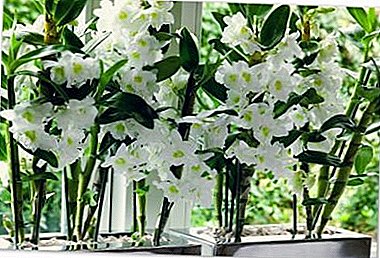 Lighting. Under natural conditions, the Dendrobium Nobile lives in diffused light. Therefore, it is better to place a pot with a flower is better to place on the eastern or western window sills.
Lighting. Under natural conditions, the Dendrobium Nobile lives in diffused light. Therefore, it is better to place a pot with a flower is better to place on the eastern or western window sills.- Watering. Moisturize the soil only after it dries. And in the winter season in general, you need to arrange the plant drought. In the warm season, watering twice a month will suffice. Watering can be both immersion and using a shower. Both the one and the other method are correct. Water for irrigation should not be too cold.
When watering with the help of the shower you need to ensure that water droplets do not fall on the pseudobulb and sheet rosette.
- Air temperature. The air should be well heated if there is a lot of light in the room. If the lighting is weak, then the air temperature should be reduced. The optimum temperature range ranges from 18-22 degrees Celsius.
Important! In especially hot hours it is necessary to spray the plant more often so that the roots and leaves do not dry out.
Do I need to immediately trim the arrows?
On the question of whether it is necessary to immediately cut off the dried off shoots of an orchid, we recall that the arrows contain all the nutrients after flowering Dendrobium. Therefore, experienced growers do not advise immediately after the fall of the buds to remove the peduncle. It is better to wait until it is completely dry.
This suggests that all the useful elements were transferred to other parts of the plant, and the peduncle is no longer capable of forming buds. It is necessary to cut, capturing at the same time somewhere a centimeter of the green part. After that, do not forget to sprinkle the cut sites with crushed coal. Sometimes the peduncle does not dry up at all.
So, next time flowering will occur on it. therefore flower grower can leave flower arrow on orchid. However, it can remove it. By this he does not harm the Dendrobium. Just then you need to wait longer for a new escape.
Making conclusions, I would like to say that Dendrobium Nobile is one of the most undemanding types of orchids. But at the same time one of the most beautiful-looking plants. In addition, this orchid is very easily propagated at home with cuttings. All this makes Dendrobium one of the most popular plant species in many countries of the world.


 Lighting. Under natural conditions, the Dendrobium Nobile lives in diffused light. Therefore, it is better to place a pot with a flower is better to place on the eastern or western window sills.
Lighting. Under natural conditions, the Dendrobium Nobile lives in diffused light. Therefore, it is better to place a pot with a flower is better to place on the eastern or western window sills.